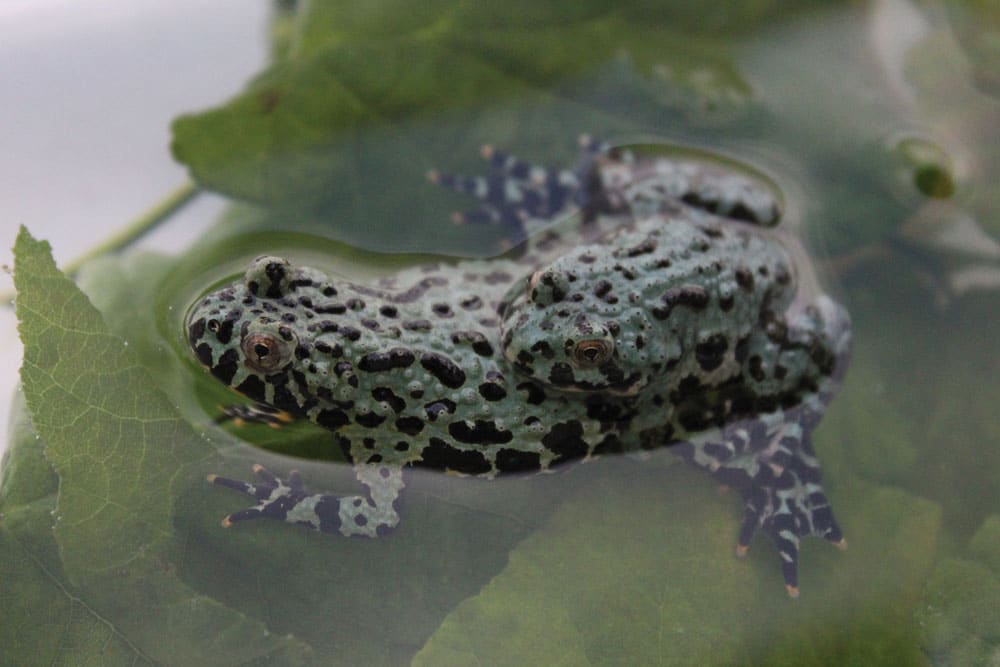Fire-bellied toads are not true toads, but rather are frogs that average about 1.5 to 3.5 inches (4 to 9 cm) in length.
They are known all over the world. The fire-bellied toads of the genus Bombina. The genus itself is quite manageable, yet very diverse. There are species that are recommended for beginners, like the Chinese fire-bellied toad (Bombina orientalis), but also those that are quite difficult to maintain and propagate, like the small-webbed bell toad (Bombina microdeladigitora). Still others are true rarities in terraristics; two subspecies are not even terraristically established. The keeping is versatile and constant new impressions are guaranteed. But which (sub)species have become established in the meantime? How do you keep and propagate fire-bellied toads correctly? What differences are there in the care between the individual (sub)species and what color morphs are there? I would like to get to the bottom of these and other questions in this article.
Classification
Fire-bellied toads are not true toads, but rather are frogs that average about 1.5 to 3.5 inches (4 to 9 cm) in length. Their way of life is semi-aquatic, i.e. spending half their time in the water. A striking feature are the heart-shaped pupils. Fire-bellied toads are counted among the primitive anurans. Unlike other frogs, fire-bellied toads produce their calls inspiratorily, i.e. when breathing in. Fire-bellied toads represent a separate, rather concise genus: Bombina (Oken, 1816). Together with the Barbour frogs (Barbourula Taylor & Noble, 1924) they form the family Bombinatoridae (Gray, 1825). The species or subspecies status of some taxa of the genus Bombina is still under discussion.
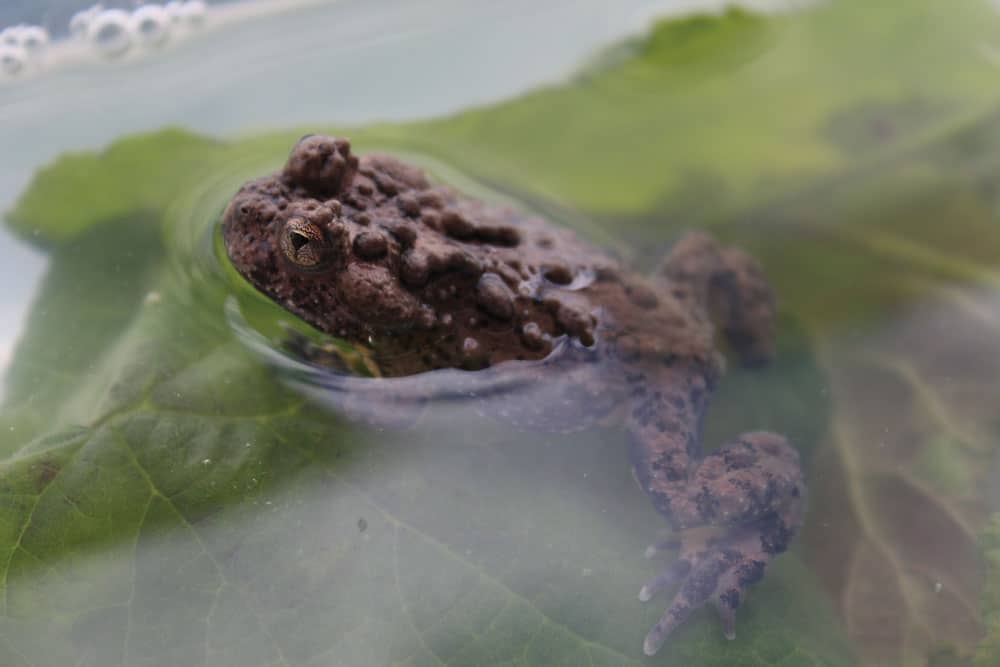
Bombina maxima. Photo by Leandro Bergmann
Depending on the author, up to eight species and a few subspecies are recognized; this is also due to the species concept preferred by the respective researcher. The genus is divided into two subgenera: The small-sized species (Bombina bombina, Bombina orientalis, Bombina pachypus and Bombina variegata) are listed as the subgenus Bombina (Tian & Hu, 1985), while the remaining large-sized species (Bombina maxima, Bombina microdeladigitora, Bombina fortinuptialis and Bombina lichuanensis) form the subgenus Grobina (Dubois, 1987).
Fire-bellied toads inhabit the Asian and European continents. European species include the European fire-bellied toad (Bombina bombina) (Linnaeus, 1761), which is also native to Germany and whose range extends to the Ural Mountains. The yellow-bellied toad (Bombina variegata variegata) (Linnaeus, 1758) is also found in Germany. It has a western and an eastern lineage. The distribution of the western nominate form reaches from Central Europe to the northern Balkan region, while the eastern nominate form inhabits the Carpathian regions.
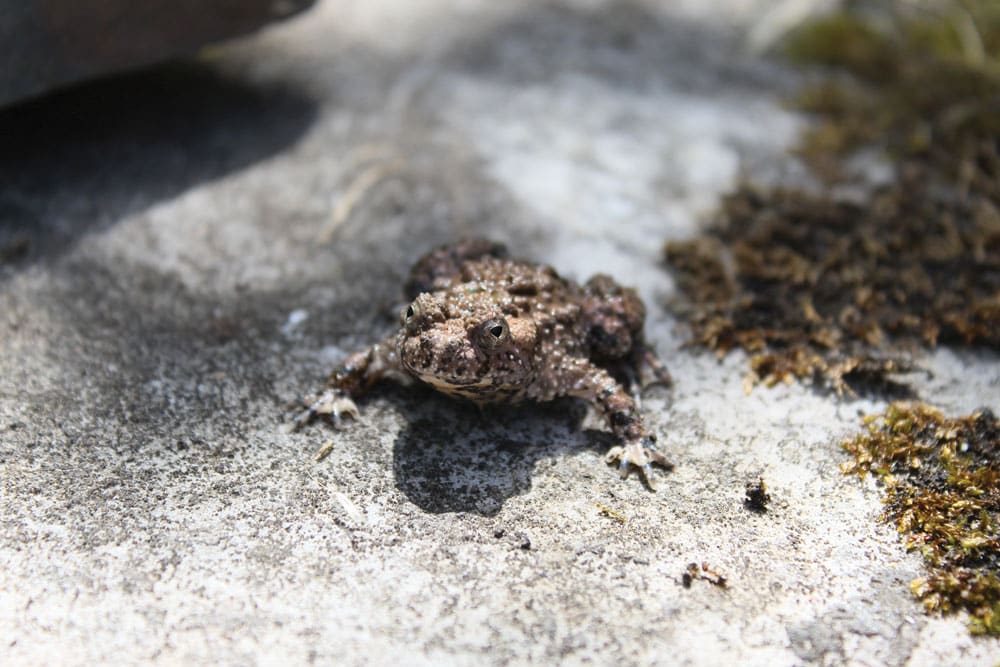
Fire-bellied toads make great pets. Photo by Leandro Bergmann
Two subspecies of the yellow-bellied toad have been described: The Greek yellow-bellied toad (Bombina variegata scabra) (Küster, 1843) inhabits the southern Balkan region. In Dalmatia, on the other hand, the Dalmatian yellow-bellied toad (Bombina variegata kolombatovici) (Bedriaga, 1891) is found. The species status of this subspecies is disputed. The last European species is the Italian yellow-bellied toad (Bombina pachypus) (Bonaparte, 1838), which is native to southern Italy.
The Asian continent, on the other hand, is inhabited by the Chinese fire-bellied toad (Bombina orientalis) (Boulenger, 1890), which occurs in China, Japan, Korea and Russia. The large-webbed bell toad (Bombina maxima) (Boulenger, 1905) inhabits China. And the small-webbed toad (Bombina microdeladigitora) (Liu, Hu & Yang, 1960) occurs in Vietnam. Finally, there are the Lichuan fire-bellied toad (Bombina lichuanensis) (Ye & Fei, 1994) and the Guangxi fire-bellied toad (Bombina fortinuptialis) (Liu, Hu, Tian & Wu, 1978). These two species are also controversial.
Acquisition
Depending on which continent of the world you live on, you have better or worse chances to acquire different (sub)species of fire-bellied toads. Widely spread and very well-known is the Chinese fire-bellied toad (Bombina orientalis). It is one of the most popular terrarium animals and so it is offered quite often. In Europe it is now possible to obtain all species except Bombina lichuanensis and Bombina fortinuptialis. Also pure lines of the yellow-bellied toad can be found on the market. In some continents, like America or Asia, the yellow-bellied toads are mostly mixtures of several subspecies. Also often from the two genetic lines. This problem exists of course also in Germany, but keepers here have the possibility, after a little search, to acquire pure (sub)species, of which sometimes even the place of origin is still available. With new acquisitions, the usual quarantine measures in the terrariums are to be kept.
Bombina variegata variegata and Bombina orientalis also have very nice color morphs that are worth breeding. The blue (axanthic) animals of Bombina orientalis are especially desired. Bombina orientalis and Bombina variegata variegata also have albinos: Bombina variegata variegata has T-albinos, whereas Bombina orientalis has T+albinos. For successful breeding of albinos you need heterogeneous albinos. These “Het” are normally fanned, but have albinotic blood. If you would cross two albinos with each other it would work, but the offspring would be weak and you would have to expect failures.
Fire-bellied Toad Husbandry
Keeping fire-bellied toads is not difficult in itself, it always depends on which species you keep. I can recommend the keeping of these amphibians in groups of five to 15 animals. It would make sense if there are more females than males in this group, so that they are not too crowded. The size of the terrarium should be at least 24” x 12” x 12” (60 x 30 x 30 cm). In such a tank you can maintain a good group of up to six animals. Better suited are tanks with a size of 32” x 16” x 16” (80 x 40 x 40 cm). Larger groups can also be kept in larger terrariums. The terrarium should consist of two parts: A land part and a water part. The water part should occupy about 2/3 of the surface. It should be between 5 and 10 cm deep for adults. Bombina bombina, however, prefers a much deeper water area: of all fire-bellied toads they are best adapted to aquatic life and require a water depth of just under 10 inches (25 cm).
Accordingly, an aquarium can also be used here. It is very important that it is well ventilated. The bottom can be covered with a layer of gravel or sand. In addition, the water part should be well planted with aquatic plants. Water plant (Elodea), Java moss (Taxiphyllum barbieri) and Java fern (Microsorum pteropus) are very suitable for this. The land part should occupy 1/3 of the terrarium. This can be divided with multi-level, for example, a gravel layer and then a peat layer. In addition, there should be sufficient hiding places. These can be offered in the form of cork bark caves, stone structures or good planting. As planting is suitable, Ficus is a great plant, but also other, non-toxic plants do well.
The water should be changed regularly. It depends a little on the water volume and the density of the stock. However, I recommend a partial water change every three weeks. It is favorable to install a small filter for Bombina bombina, Bombina maxima and Bombina microdeladigitora, because they are a bit more sensitive, but you can also do without it, if you pay attention to cleanliness. As for lighting, quite a lot comes into question. In this day and age, it can make sense to switch to energy-saving lighting. This is good for your own ecological footprint.
For example, LED-based lamps can be used. Only the Italian yellow-bellied toad (Bombina pachypus), which is native to warm Italy, needs warmer temperatures from time to time. For this you can switch a UVB lamp on for a few hours a week. The temperature should usually be between 65 and 83 degrees Fahrenheit (18 and 28 degrees Celsius). The European (sub)species generally like it a bit warmer, while Bombina maxima needs it cooler. For the latter, temperatures should not exceed 77 degrees Fahrenheit (25 degrees Celsius). The water temperature should be room temperature.
For Bombina microdeladigitora it can be helpful to add semandel tree leaves or alder cones to the water part, as they have a slight anti-bacterial effect. Fire-bellied toads are easy to maintain as long as you pay attention to idiosyncrasies in some species. For the beginner, the Chinese fire-bellied toad is recommended. If you have a lot of experience in terraristics or with the genus Bombina, you can keep the difficult small-webbed toads.
Fire-bellied Toad Food
The optimal diet is a decisive factor for fire-bellied toads. It should be as rich in vitamins and minerals as possible. Useful here are various powders from different suppliers with which you can powder the feeders at every third feeding. However, you should also feed a varied diet. This diet should include crickets, flies and mealworms and other worms. Fire-bellied toads can eat a wide variety of foods. The size of the feeders and the frequency of feeding depends on the size of the fire-bellied toads.
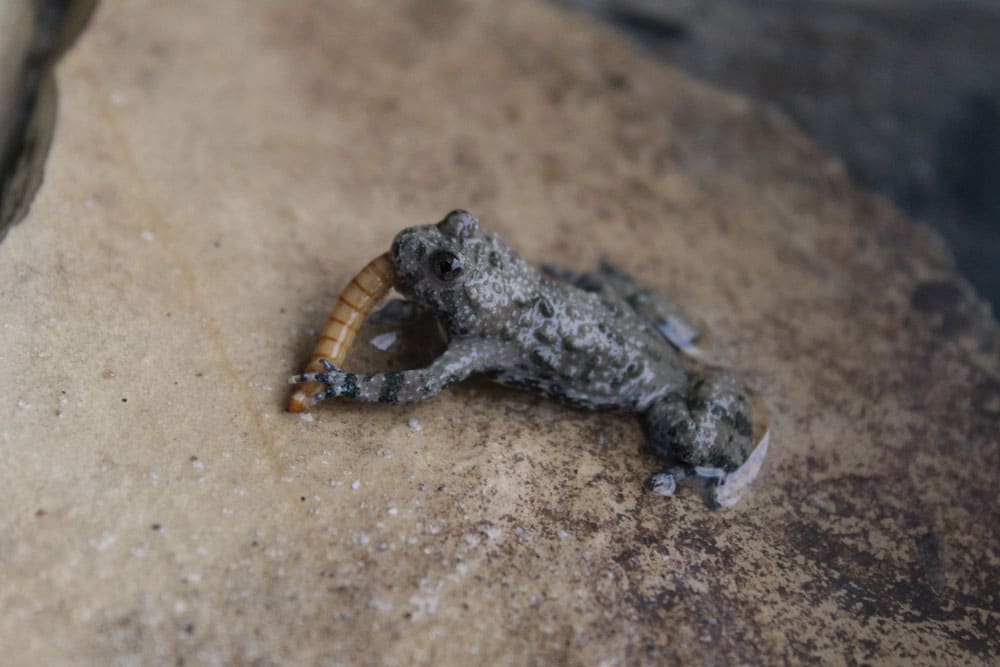
Mealworms are one of many insects fed to fire-bellied toads. Photo by Leandro Bergmann.
I feed my adult fire-bellied toads every three days. Juveniles, on the other hand, should be fed daily shortly after coming ashore. It is quite astonishing how skillful fire-bellied toads are in hunting, considering that they have only a small disc tongue. They overpower even comparatively quite large food.
Sexing
Since fire-bellied toads show a clear sexual dimorphism, the males are very easy to distinguish from the females, provided both sexes are present and they are adult toads. Identification after overwintering is particularly accurate. Females have already produced their first spawn and generally appear somewhat plumper. Their skin is also smoother. The males, on the other hand, have a more athletic figure. They are usually somewhat larger than the females and have strong, horny nipples and strongly pronounced webbed hind feet. The most distinctive feature, however, is the male’s rutting calluses on the inside of the upper arms. The gray-black pads appear during hibernation and serve as a secure foothold during mating. In the large-bodied species, such as Bombina maxima and Bombina microdeladigitora, these may also extend to the thoracic region. In Bombina variegata variegata they are also present on the hind feet on the second and third toes.
Hibernation
Not only is overwintering indispensable for breeding, it is also important for life expectancy. Fire-bellied toads can usually reach a stately age of up to 30 years if kept and cared for well. For overwintering you can use different methods. The wintering in a cool and dark cellar has proven itself with me. Temperatures of around 47 degrees Fahrenheit (8 degrees Celsius) prevail here in winter. Generally, the overwintering temperatures should be higher than 38 degrees Fahrenheit (3 degrees Celsius) and less than 50 degrees Fahrenheit (10 degrees Celsius). As a hibernation box you can equip a small fauna box with damp moss and pieces of cork bark. Here the animals will hide.
It is important to note that the animals must not be fed for two to three weeks before hibernation, so that their digestive tract can empty completely. Food left in digestive tracts could otherwise rot, causing the animals to perish. After this, the fire-bellied toads can be transferred to their designated containers. If you hibernate in an incubator (which can also cool, like the Lucky Reptile Herp Nursery II), it is good to bring the temperatures down gradually.
During hibernation, fire-bellied toads go into a kind of rigidity with reduced metabolism. The condition of the animals and humidity should be checked at least once a week. The length of hibernation should be at least six weeks, preferably eight to a maximum of 12 weeks. With the end of hibernation, raise the temperatures again bit by bit and the animals will slowly wake up from their condition. The fire-bellied toads can seem a bit dazed in the beginning, but this will disappear very quickly. Slowly you can put them back into their terrarium and offer them food.
Mating and Spawning
Shortly after hibernation, the male fire-bellied toads fall into a mood. They now swim around in the water calling and clasping conspecifics. If females or other males unwilling to spawn are clasped, they respond by calling for release. Rain showers or changes in water temperature seem to have a positive effect on their willingness to mate. This is probably due to the fact that fire-bellied toads inhabit ephemeral waters in nature, which are filled with fresh water after rain showers.
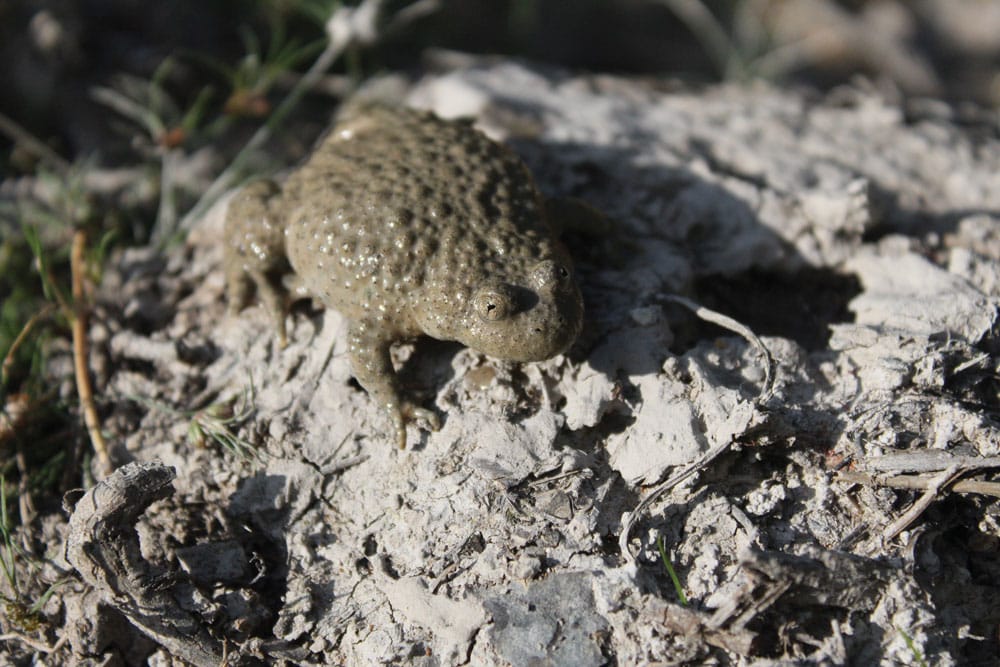
Adult female Bombina variegata variegata. Photo by Leandro Bergmann
Since the small water bodies exist only for a short time, especially in summer, the fire-bellied toads have to hurry up and spawn so that the offspring metamorphose before the water body dries up.
In the terrarium you can help, for example by spraying or by frequent and extensive water changes with the addition of cool, fresh water. Now the animals cannot be stopped. The males swim around and demarcate their calling territory by strong strikes with their hind legs. Females are clasped directly. When they are ready to spawn, they tolerate the clasping and it comes to the tolerated mating grip, the amplexus inguinalis, because fire-bellied toads clasp in the lumbar region.
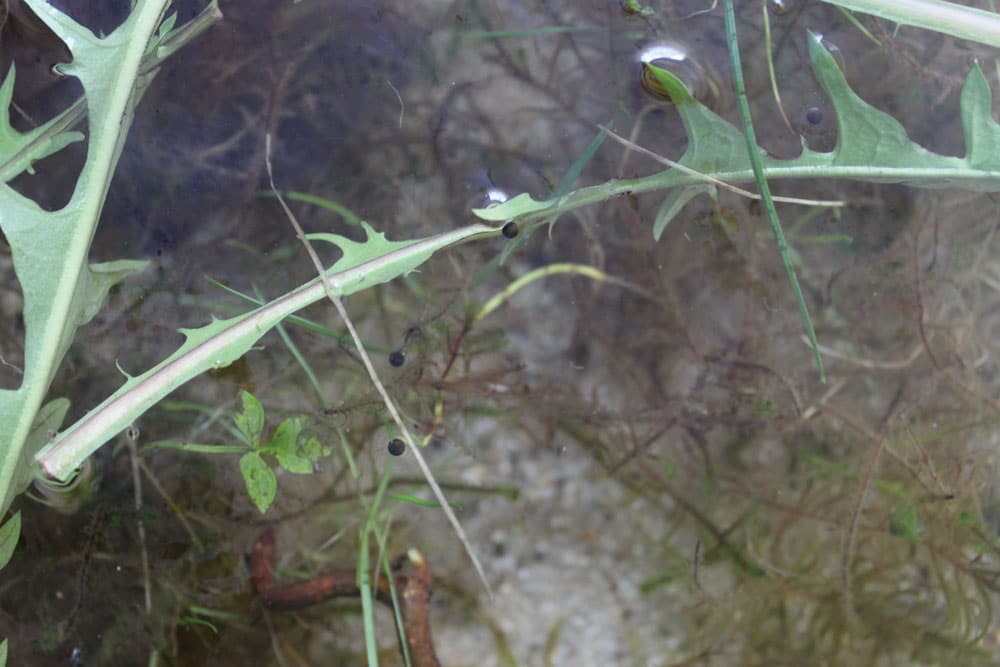
Fire-bellied toad eggs. Photo by Leandro Bergmann
Spawning usually occurs at night or at dusk and takes several hours. Prior to this, vibrating and wiggling movements of the male can be observed. The female fidgets with her hind legs and rubs them against the pubic symphysis of her partner to make him understand that now the egg-laying follows. Thereupon the mate bends her back and brings the cloaca as close as possible to the female’s cloaca in order to inseminate the emerging eggs directly on the outside. These eggs are attached in many small clumps to structures in the water, such as plants and stones, with gyrating movements.
The pair separates again after spawning. It is interesting to note that fire-bellied toads rely on a different strategy for reproduction: While many frogs and toads produce rather large spawn balls or spawn strings at the beginning of spring, i.e., to produce as many offspring as possible at once, female fire-bellied toads are able to divide the spawn over the year and thus often spawn several times a year, into late summer.
Rearing Fire-bellied Toads
If you see that two animals are in the amplexus, you can also put them in a spawning tank. By this action you can save the tedious picking up of the eggs crisscrossed in the water part. The quantity of eggs depends strongly on the age, the female, the current condition and the (sub)species. The number of eggs decreases from time to time during the season. When the fire-bellied toads have spawned in the terrarium, the spawn should be left in place for one more day to achieve the highest possible fertilization rate, since the eggs are still between the sperm.
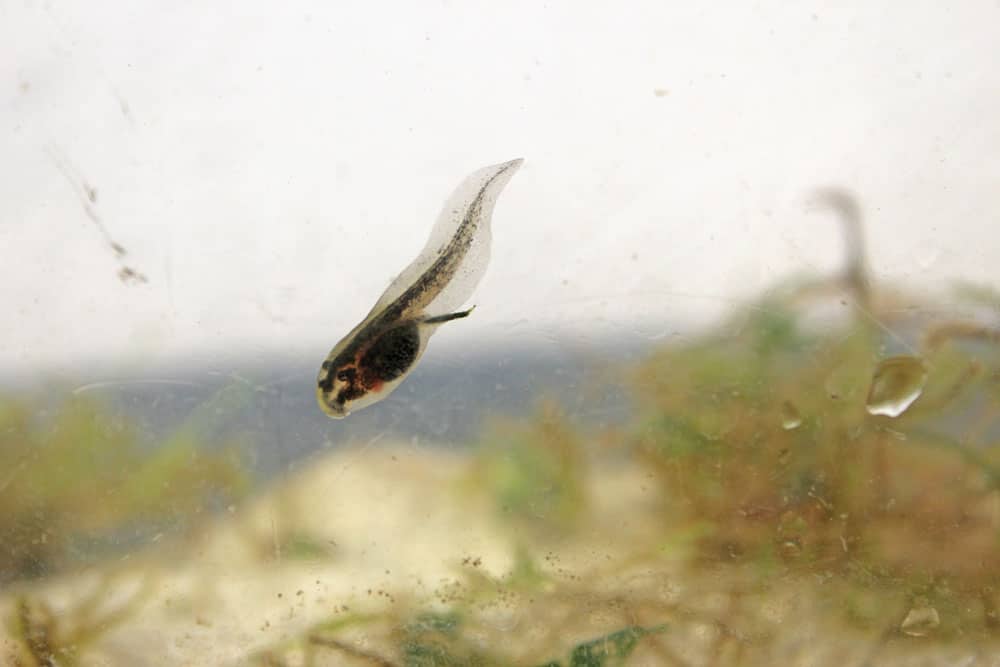
A tadpole. Photo by Leandro Bergmann
Bombina microdeladigitora sometimes have a poor fertilization rate because there are males that have poor sperm counts. Then you can transfer the eggs into the appropriate containers. As containers I use plastic tubs with the dimensions 24” x 16” x 16” (60 ×40 × 40 cm). You should plan at least two liters of water per tadpole. Bombina maxima needs a lot of space for healthy development. The young tadpoles are bigger and stronger when they go ashore, and with the large space you avoid a crowding effect.
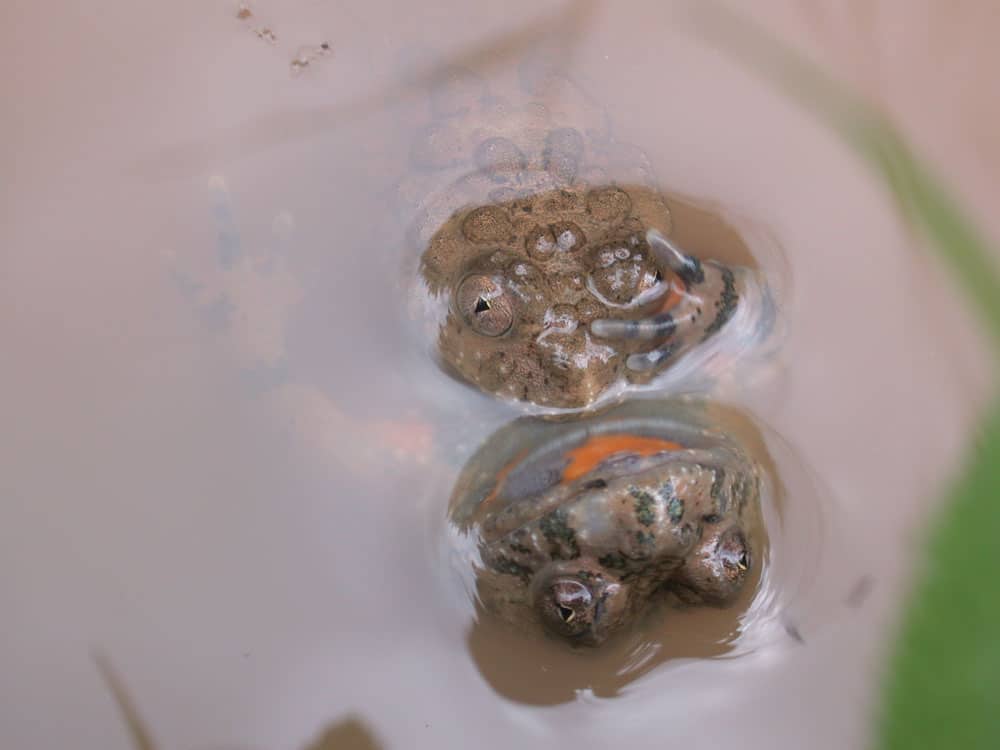
A breeding pair. Photo by Leandro Bergmann
In general, breeding is not difficult, with a few exceptions. I raise the tadpoles at 65 to 72 degrees Fahrenheit (18 to 22 degrees Celsius). Except for Bombina pachypus: these need 81 degrees Fahrenheit (27 degrees Celsius) for healthy development. Such temperatures can be achieved with an aquatic heater.
The water temperature also affects the speed of development. At higher temperatures, development is faster, but results in smaller terrestrials, which are often difficult to care for. The opposite results with cooler rearing. Depending on the temperature, the larvae hatch after three to 10 days. The development process in the egg can be observed very well.
Initially, two poles can be observed: one black and one white, with the black one pointing upward to receive light. The saying “black attracts the sun” fits this. Gradually, the white turns to black. A comma emerges from the sphere, and soon the embryo’s gills and eyes are visible.
After hatching, the approximately 0.5 cm large tadpoles feed on their yolk supply. Shortly thereafter they swim around and attach themselves to plants and walls with their adhesive apparatus. The adhesive apparatus serves the tadpole in the first days after hatching, in this size they consume first smallest algae.
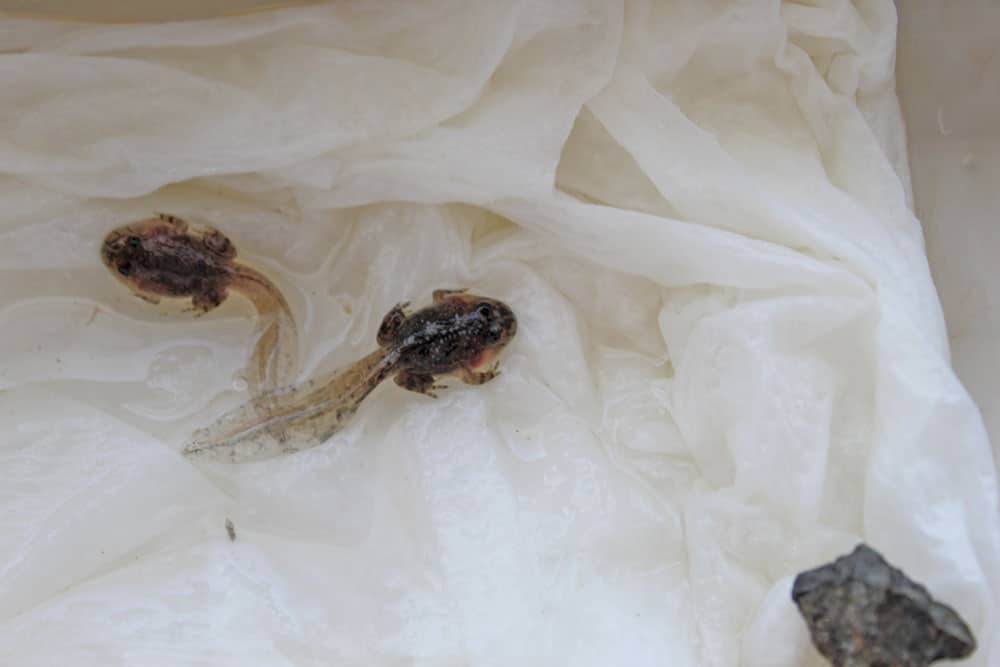
The froglet stage. Photo by Leandro Bergmann.
A few days later, however, they should be fed for the first time with the help of the keeper. Animal food, such as Artemia and Daphnia, as well as non-toxic vegetable food is suitable: From dandelion, lettuce, algae, clover, daisies, nettle to old leaves. Before feeding, these should be properly frosted, so the plants become softer and are more digestible for the burbot. Furthermore, you can also feed fish food flakes. However, Bombina maxima should be fed more with animal food and Bombina microdeladigitora exclusively with animal food, because they get diarrhea from fish food flakes. Otherwise Bombina microdeladigitora also needs much longer for development than all other species. I generally recommend to integrate a substrate (like gravel or sand layer), because during the fast digestion of the tadpoles a lot of mulm is produced and the substrate absorbs it until it can be sucked off.
The water level should be about 8 inches (20 cm). You should plan some time for the rearing, because every day a partial water change has to be done. Therefore, it is advisable to give several small portions daily than one large one. At first, the tadpoles only gain in size. Through their almost transparent body organs shimmer through. Over time, two tiny stubs form at the base of the tail—the first signs of hind legs. They continue to grow and form. Once they have reached their full size, the forelimbs can slowly be seen, which remain in the respiratory cavity of the burbot until they break through. Once the forelimbs have broken through, the metamorphs are fished out and transferred to a tank lined with damp kitchen paper. This process is absolutely necessary so that the little landers do not drown during metamorphosis. There are other methods of making the transition from aquatic to terrestrial life, but this is my method, which has always worked well so far. On the back you can already see the typical pattern, while the belly still seems pale whitish.
As long as the animals still have their tail remnant, they do not need food, because they reabsorb their tail.
As soon as this is gone, they can be fed with aphids, Drosophila or micro crickets. This food must be regularly dusted with supplemental powders, as explained under “Feeding.” Failure to do so can result in rickets, which can be reflected in bent or shortened limbs or puny growth. The red-bellied and orange-bellied fire-bellied toads often have a yellow belly instead of a colored one: this deficiency can be remedied by feeding them stream fleas or water fleas. Or you can use powders containing the red pigment canthaxanthin. With good and daily feeding the juveniles grow rapidly and can reach a good 3 to 4 cm after half a year. They reach sexual maturity at 1 to 1.5 years and the cycle begins again.

